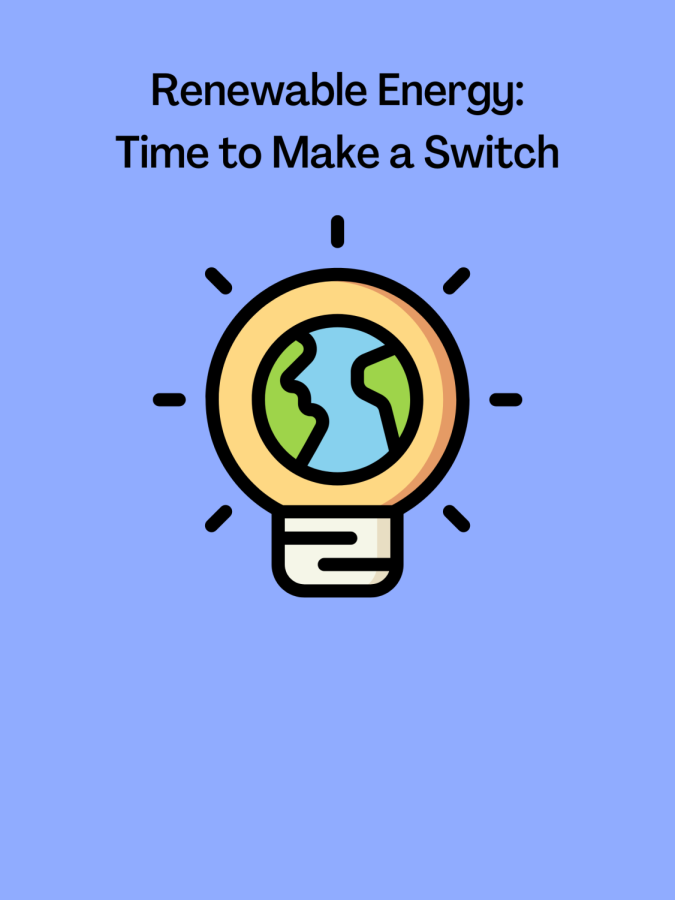Renewable Energy: Time to Make a Switch
September 16, 2022
The United States in 2008 uses 4.11 million gigawatts of electricity an hour with the majority of this energy created by fossil fuels. The United States uses fossil fuels mostly due to the cheap cost, and it is already well established in the states. In 2020 the energy in the United States was 35% from petroleum, 10% from coal and 34% being natural gasses all of these are nonrenewable energies and only 12% of the U.S. energy was from renewable sources (U.S. Energy Information Administration).
Greenhouse gasses such as methane and CO2 create holes in the atmosphere, specifically the Ozone layer. This leads to global warming, due to the hole letting in UV rays. The consequences of global warming are more drastic weather conditions, rising sea levels, more acidic oceans, animals struggling to adapt to the new conditions, can cause risk to human health and more.

In 2021, President Biden rejoined the Paris Agreement, an agreement made by over 40 countries to help prevent the worsening climate change. Not only this, but the U.S. government is planning on reducing the cost of clean hydrogen and other renewable energies by 80% within this decade. They refer to this plan as the Earth-shot or Hydrogen shot. They also have set aside 2 billion to help developing countries make the switch to renewable energy. The United States accounts for less than 15% of global emissions, but the international goal of temperature rise is still not being met. Other countries are working to aid in these reductions.

In Denmark around 67% of the energy is from renewable sources, a little over 46% of its energy comes from wind energy. In 2020 the Danish government passed a bill that plans on reducing emissions 70% by 2030 from the original 1990 emissions. Added on to that country wishes to be carbon neutral by 2050. The act was only recently amended in 2021, where they set another goal in a closer time frame in 2025, where they plan to reduce emissions by around 50%. Denmark are doing this by switching to more efficient energy, specifically wind and solar energy. Not only this, but also the government is working on various strategies to help decrease the carbon emissions.
The United States and other countries have recently seen the detrimental effects of what global warming can do. With extreme weathers, droughts, wildfires and more. It is important to consider switching to renewable energy before it is too late. With all the diverse options of renewable energy, there is a type that will work for each country, state and/or county.

The issue with wind turbines is the tremendous amount of space they take up. This can have multiple repercussions such as habitat loss, noise pollution, disturbing wildlife and more. The Office of Energy efficiency and renewable energy in the United States have found wind turbines can hit small flying animals like birds and bats. But these issues are not unsolvable. Since wind turbines were created with modern innovations, they have seen improvements. Currently, there is promising research being done that has been working on helping reduce the repercussions.
The United States and other countries have recently seen the detrimental effects of what global warming can do. With extreme weathers, droughts, wildfires and more. It is important to consider switching to renewable energy before it is too late. With all the diverse options of renewable energy, there is a type that will work for each country, state and/or county.








